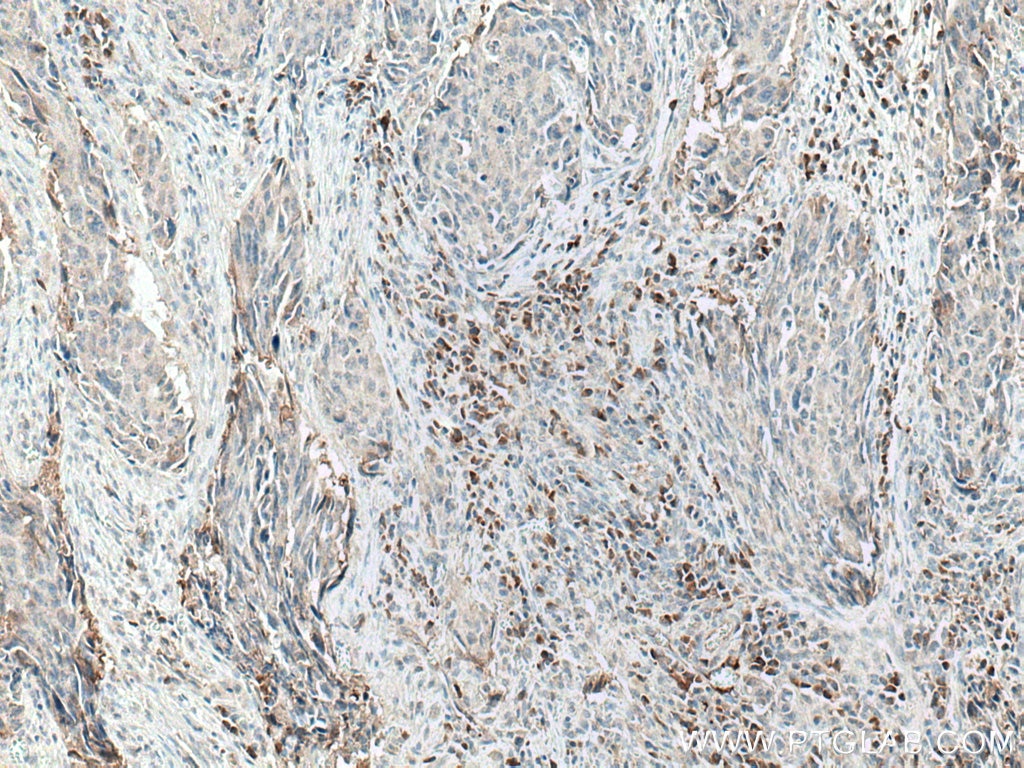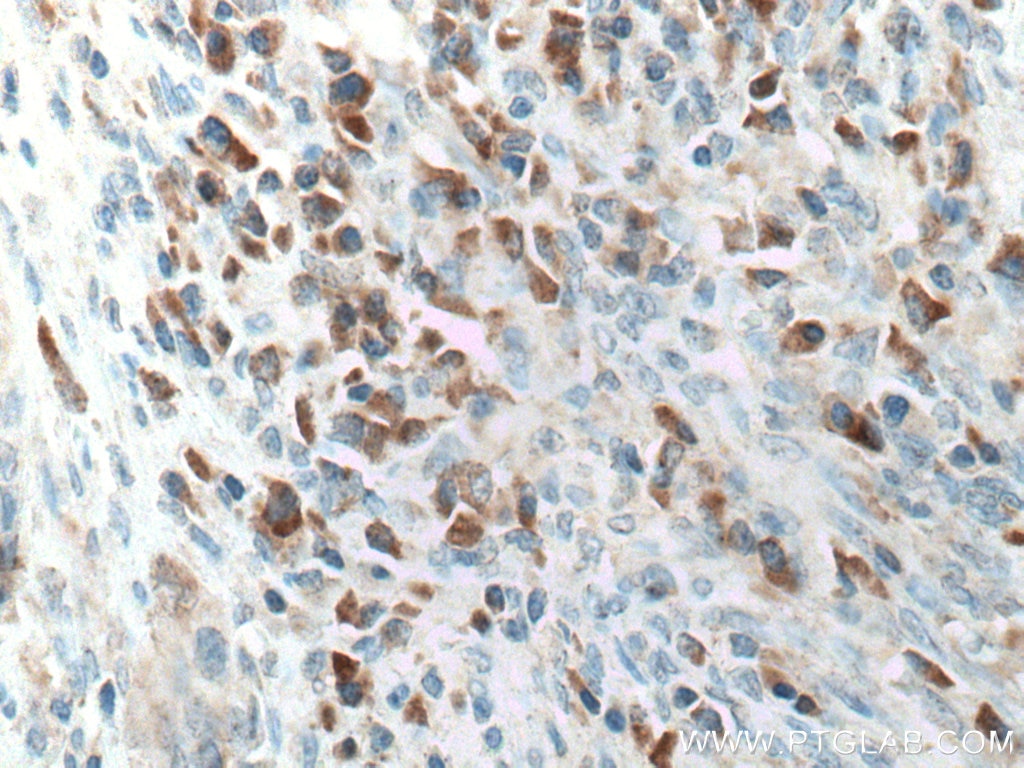CXCL11 Polyklonaler Antikörper
CXCL11 Polyklonal Antikörper für WB, IHC, ELISA
Wirt / Isotyp
Kaninchen / IgG
Getestete Reaktivität
human
Anwendung
WB, IHC, IF, ELISA
Konjugation
Unkonjugiert
Kat-Nr. : 10707-1-AP
Synonyme
Geprüfte Anwendungen
| Erfolgreiche Detektion in WB | IFN gamma, LPS and Brefeldin A treated THP-1 cells |
| Erfolgreiche Detektion in IHC | humanes Kolonkarzinomgewebe Hinweis: Antigendemaskierung mit TE-Puffer pH 9,0 empfohlen. (*) Wahlweise kann die Antigendemaskierung auch mit Citratpuffer pH 6,0 erfolgen. |
Empfohlene Verdünnung
| Anwendung | Verdünnung |
|---|---|
| Western Blot (WB) | WB : 1:500-1:1000 |
| Immunhistochemie (IHC) | IHC : 1:50-1:500 |
| It is recommended that this reagent should be titrated in each testing system to obtain optimal results. | |
| Sample-dependent, check data in validation data gallery | |
Veröffentlichte Anwendungen
| WB | See 1 publications below |
| IHC | See 2 publications below |
| IF | See 1 publications below |
Produktinformation
10707-1-AP bindet in WB, IHC, IF, ELISA CXCL11 und zeigt Reaktivität mit human
| Getestete Reaktivität | human |
| In Publikationen genannte Reaktivität | human |
| Wirt / Isotyp | Kaninchen / IgG |
| Klonalität | Polyklonal |
| Typ | Antikörper |
| Immunogen | CXCL11 fusion protein Ag1087 |
| Vollständiger Name | chemokine (C-X-C motif) ligand 11 |
| Berechnetes Molekulargewicht | 10 kDa |
| Beobachtetes Molekulargewicht | 10 kDa |
| GenBank-Zugangsnummer | BC005292 |
| Gene symbol | CXCL11 |
| Gene ID (NCBI) | 6373 |
| Konjugation | Unkonjugiert |
| Form | Liquid |
| Reinigungsmethode | Antigen-Affinitätsreinigung |
| Lagerungspuffer | PBS with 0.02% sodium azide and 50% glycerol |
| Lagerungsbedingungen | Bei -20°C lagern. Nach dem Versand ein Jahr lang stabil Aliquotieren ist bei -20oC Lagerung nicht notwendig. 20ul Größen enthalten 0,1% BSA. |
Hintergrundinformationen
CXCL11, also known as IFN-inducible T-cell α-chemoattractant (I-TAC), is a member of the ELR-negative CXC chemokine family. It is produced by various cells including leukocytes, fibroblasts, and endothelial cells upon stimulation with interferons (IFNs). CXCL11 signals through the chemokine receptors CXCR3 and CXCR7 . This chemokine is associated with multiple functions such as chemotactic migration, regulation of cell proliferation and self-renewal, increasing cell adhesion, and modulation of angiostatic effects.
Protokolle
| PRODUKTSPEZIFISCHE PROTOKOLLE | |
|---|---|
| WB protocol for CXCL11 antibody 10707-1-AP | Protokoll herunterladen |
| IHC protocol for CXCL11 antibody 10707-1-AP | Protokoll herunterladenl |
| STANDARD-PROTOKOLLE | |
|---|---|
| Klicken Sie hier, um unsere Standardprotokolle anzuzeigen |
Publikationen
| Species | Application | Title |
|---|---|---|
Brain Res Bull Silent information regulator 1 ameliorates oxidative stress injury via PGC-1α/PPARγ-Nrf2 pathway after ischemic stroke in rat. | ||
Biomedicines Identification and Preliminary Clinical Validation of Key Extracellular Proteins as the Potential Biomarkers in Hashimoto's Thyroiditis by Comprehensive Analysis | ||
Cancer Immunol Immunother Comprehensive analysis of the relationship between ubiquitin-specific protease 21 (USP21) and prognosis, tumor microenvironment infiltration, and therapy response in colorectal cancer | ||
Signal Transduct Target Ther Ultra-high dose rate radiotherapy overcomes radioresistance in head and neck squamous cell carcinoma | ||
Arthritis Res Ther Integrated analysis of dermatomyositis reveals heterogeneous immune infiltration and interstitial lung disease-associated endotype |




